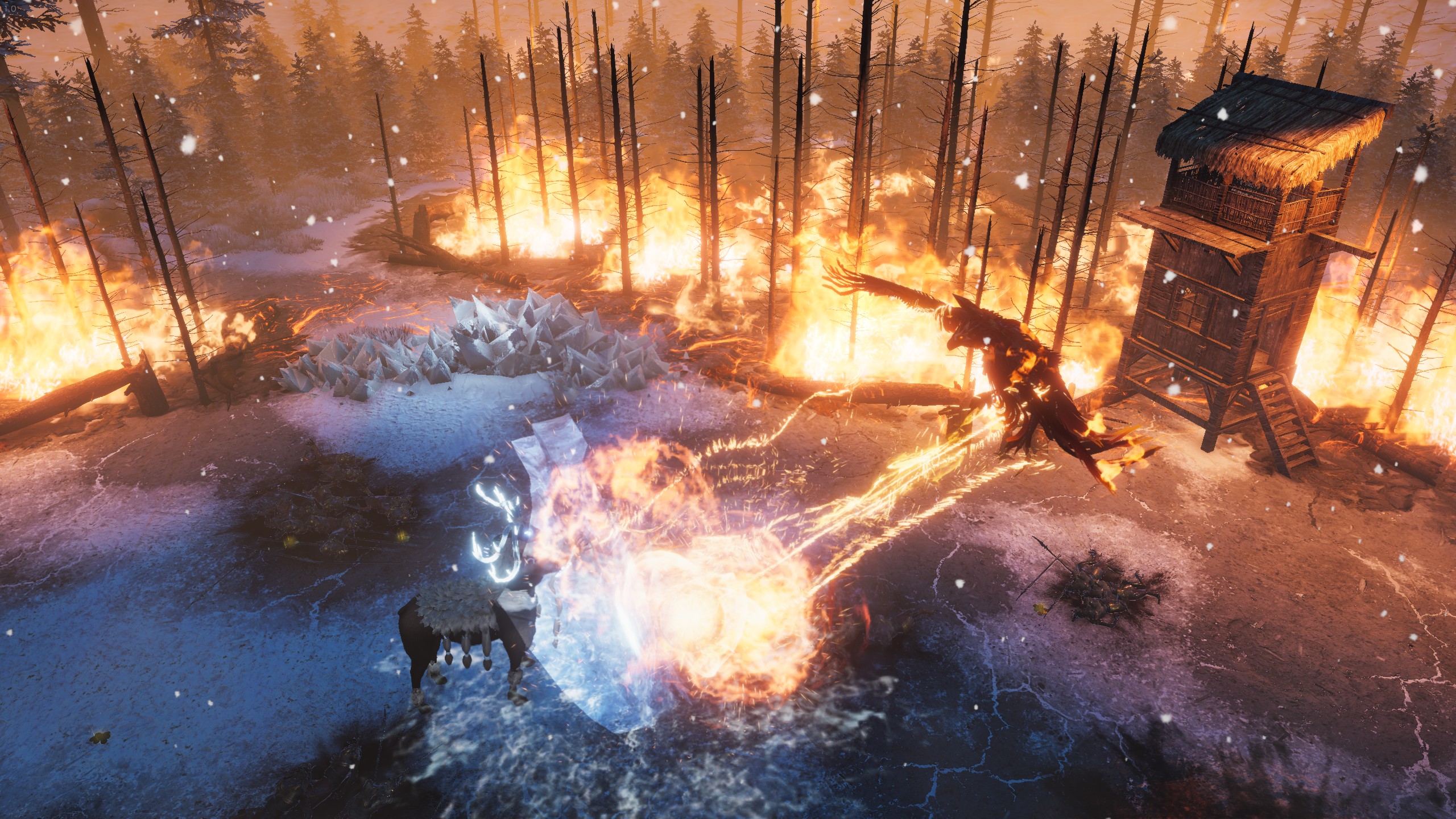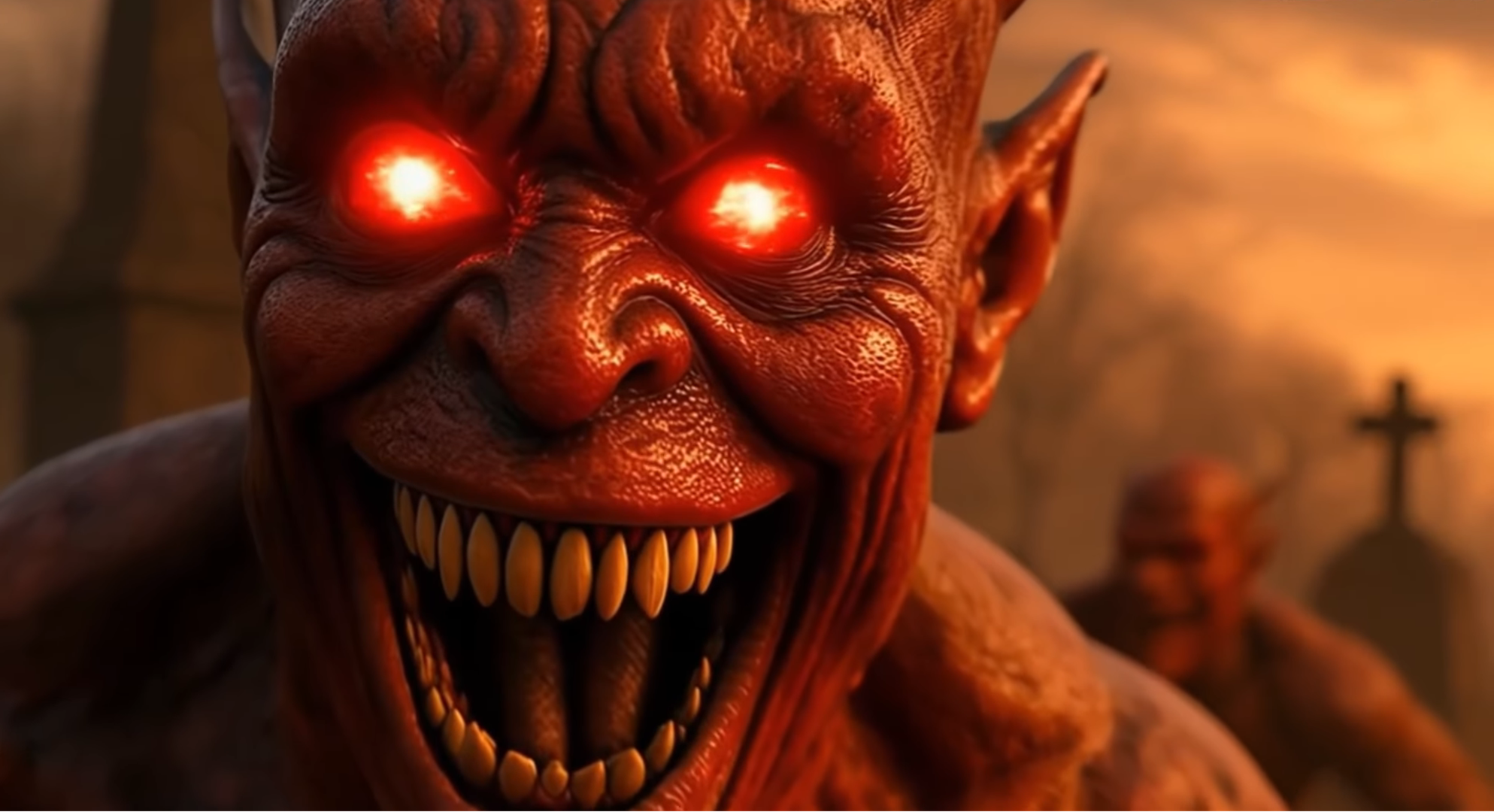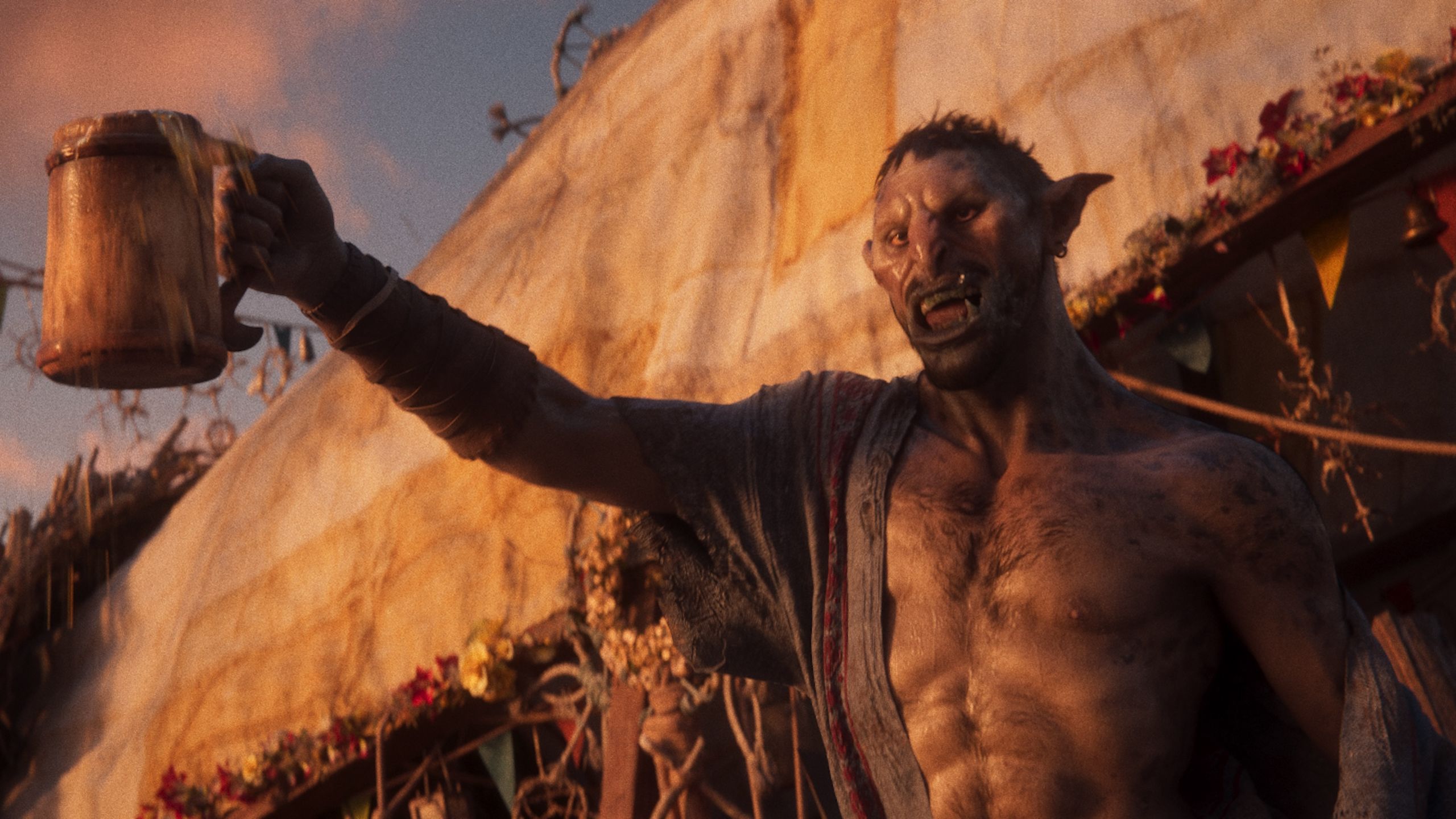Path of Exile has been a constant in my life for the last decade. Grinding Gear Games managed to craft a true Diablo-slayer with its inconceivably brilliant passive skill tree, elaborate loot, a gem system that serves as a fantastic alternative to traditional active skill progression, all of it wrapped up in an adventure with an oppressively moody atmosphere harking back to the good ol’ days of Diablo 2. Throw on top seasonal leagues that introduce dramatic new mechanics, which then get bundled into the core game, and you’ve got an ARPG that never stops being relevant. But after so many years of being smitten, I’m now cheating on it with Last Epoch.
I’ve dabbled in plenty of other ARPGs since my obsession with Path of Exile began, from the excellent Grim Dawn to the nostalgic Titan Quest remaster. And then there’s Diablo. Diablo 3 had a lot of detractors, but after Reaper of Souls I’d argue it has as much going for it as Diablo 2, and considerably more than Diablo 4, which I tried so hard to get into, only to get so bored that I could barely finish the campaign. It looks great, is overflowing with gothic atmosphere, and finally lets me ride around on a horse, but it’s just so safe, so dull. In every instance, I rushed back to PoE, but since I started playing Last Epoch I’ve hardly given my favourite ARPG a second thought.
I’ve still got a lot of Last Epoch to go—I just reached the endgame the other day and it’s already got its hooks in me deep—but I think it might have all of them beat. I’m absolutely lapping it up. I’ve even had to take a break from the infinite war of Helldivers 2, which has consumed so much of my time this month.
Jody was not so impressed, giving it a 60 in his Last Epoch review, and he’s not wrong about the action not packing the same wallop as Diablo 4. Where we differ is the importance placed on the quality of the animation and visual feedback in ARPGs. I really don’t care about it at all. I mean, sure, it would be great if Last Epoch had the same level of presentation as Blizzard’s latest, but I’ll take less panache for more meat, and that’s what Last Epoch offers.
When I’m surrounded by monsters and elemental magic and showers of loot, I’m not really paying attention to these things. And despite all of this, I’m still finding Last Epoch visually arresting. It’s all very typical fantasy fare, admittedly, but when I’m summoning icebergs out of the ground or using my Runemaster ability to fill the screen with elemental explosions, the impact of my attacks makes me feel incredibly powerful. And thus extremely happy. So when it comes to action, Last Epoch can go toe-to-toe with the best of them.
Middle ground
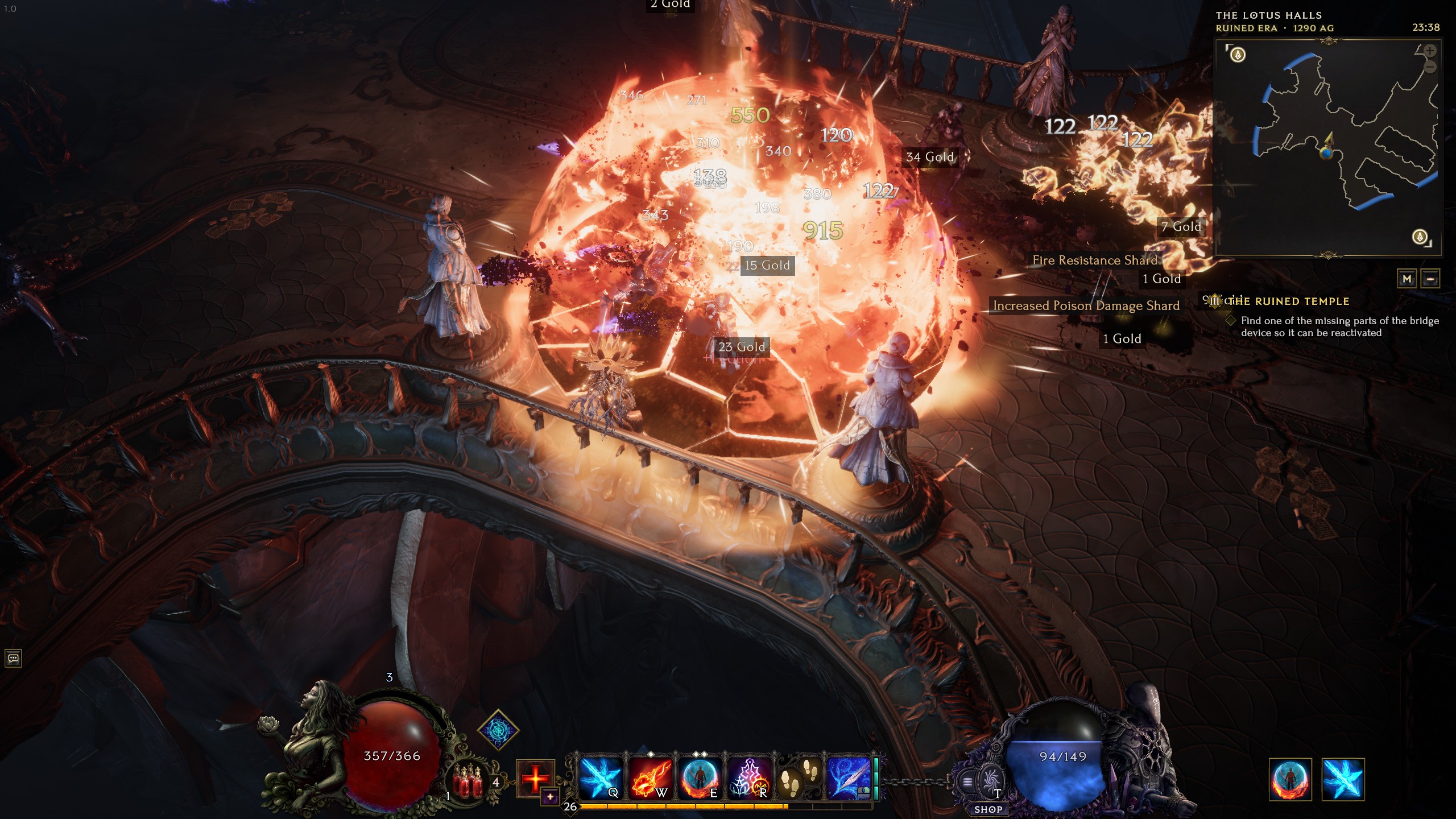
What’s really drawn me away from Path of Exile, however, is the build potential. There’s a smoothness to progression that mimics the more accessible tempo of Diablo, but when you dig into the nuts and bolts there’s just so much for theorycrafters to play around with here. What we have, then, is the best of both worlds: a game where you can go into a dungeon and blow it the hell up with your favourite spells, rapidly becoming more and more powerful; but one where you can also spend an inordinate amount of time poring over stats and items, as well as your passive and active skills, until you start to get a headache and just rip off an overpowered build from a much smarter theorycrafter.
What we have, then, is the best of both worlds.
Once you pick a specialised mastery class, you’re locked into that, but this doesn’t feel like much of a limitation. The passive skill trees of each mastery, for instance, can be dipped into regardless of which one you’re actually playing as, so in the end you’ve actually got four eclectic passive skill trees to tool around with per class. You just won’t be able to use the active skills of the other mastery classes.
Respeccing is similarly flexible and inspires experimentation throughout the journey, whether you’re a novice mage or a battle-hardened badass jumping through alternate timelines to take on a never ending string of bosses in the endgame. Respeccing passives costs gold, and respeccing your active skills sets your new ones at your minimum skill level, so you’ll potentially be a bit weaker for a wee while, but that’s the extent of the system’s limitations.
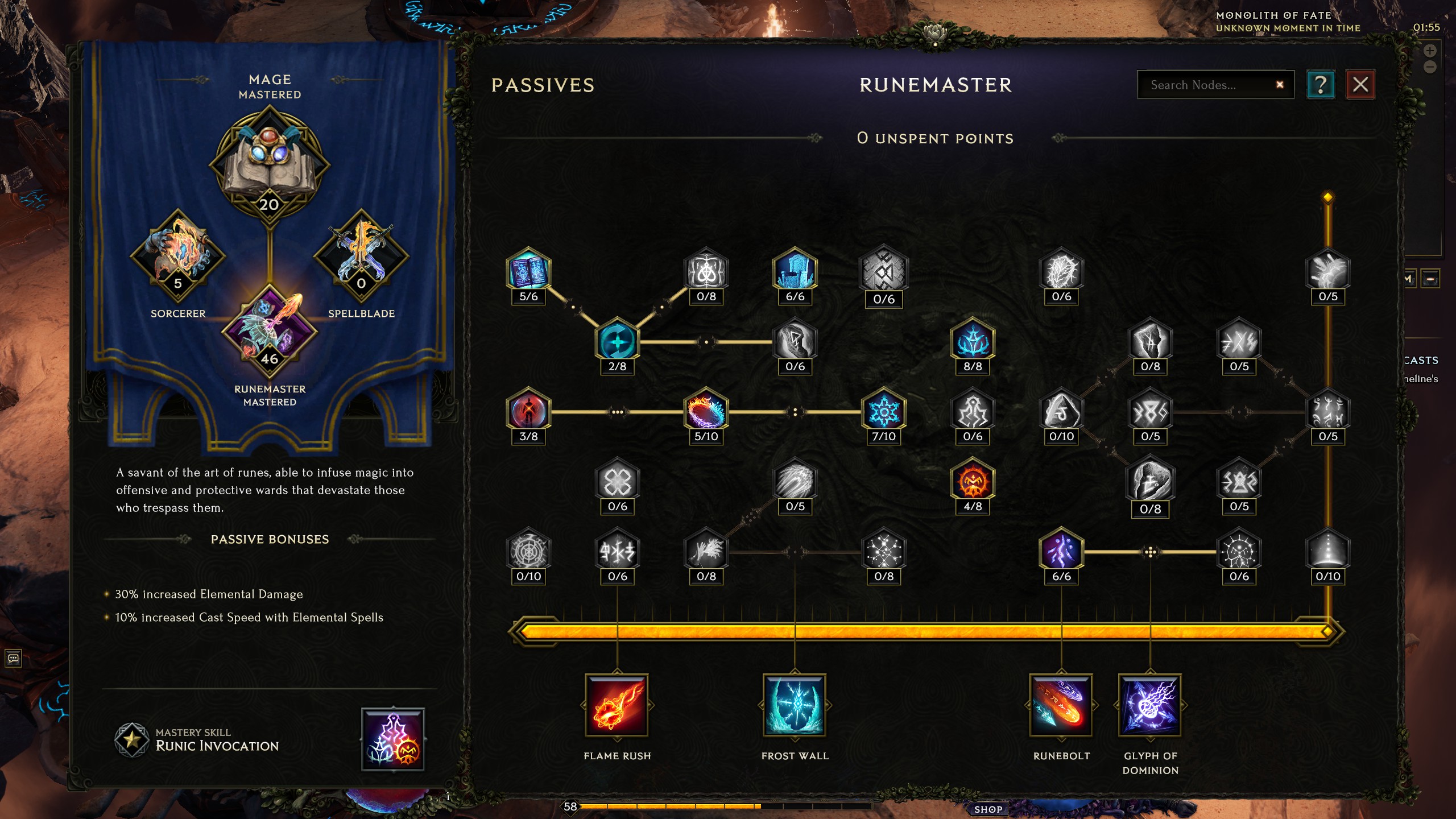
Honestly, this isn’t much of a sacrifice. It forces you to put a bit of time into your new build before you chuck all of your skill points into stuff that, actually, if you had more experience with the build, you’d realise isn’t that optimal. If you’re just copying a build, sure, that might not be a concern, but regardless it doesn’t take too long to get all the points back. It’s also worth noting that your minimum skill level rises as you skill up, so you’ll never have to start from scratch.
All this is to say that Last Epoch is ripe for build experimentation. The seemingly limited—at first—number of active skills you have on your bar also forces you to really think about synergies, and ensures that everything in your hotbar is important. And like the majority of ARPGs, swapping these skills is simple: just click on the skill and you’ll see all the other ones you unlocked, letting you play around with them to your heart’s content. When fights get heated, I’m actually thankful I only have five skills to worry about, and they offer more than enough utility.
As I mentioned earlier, I’m a Runemaster boy. This is a Mage mastery class that focuses on mixing and matching elements to create impressive new spells. Use the Mage spell Glacier a few times, for instance, and you’ll receive three ice runes, after which you can cast Runic Invocation to summon a huge icy explosion. Different elemental combinations don’t just create different explosions, however, as you can also conjure protective spells where you’re surrounded by elemental effects, or you can just toss out an elemental turret to harass monsters while you spit out other spells.
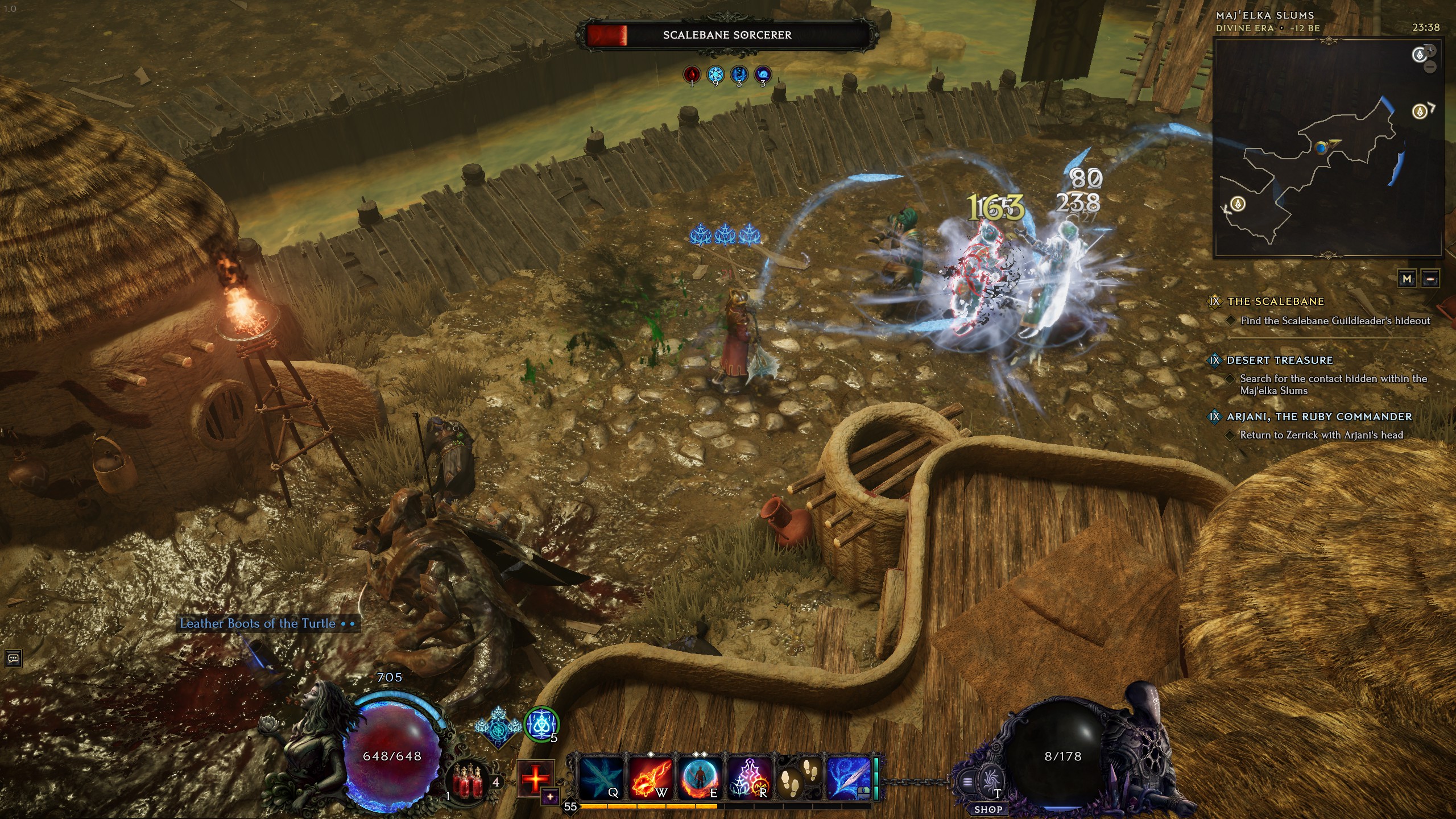
The latter seems to be the current meta for Runemasters at the moment. Get a lighting rune and two fire runes and you can cast the Hydrahedron spell, which spews explosive flaming projectiles at nearby enemies. Getting three runes takes mere seconds, and Runic Invocation has no cooldown, so your only limitation is your mana pool. That’s where Mana Strike comes into play: it’s a melee attack for mages that regenerates mana, which can be upgraded in all manner of ways, including by increasing its area of effect and how much mana it returns to you. This way, you never have to stop casting. But this also means you need to get close to enemies, and you’re a bit squishy as a caster, so stacking up on vitality items with lots of resistances is essential.
Figuring out all the risks and rewards of your build, as well as how to mitigate weaknesses and deal with potential threats, is really what ARPGs are all about for me. These are problem solving games where, after you’ve done all the sums, gathered up all of the equipment that you need and gone through your different skill trees, you’re an unstoppable god. It’s glorious.
Coming from Path of Exile, I really appreciate how powerful I feel from the get-go, too. There are lots of great levelling builds in PoE that can make you feel like a beefcake, but it’s also very easy to find yourself overwhelmed, or underpowered for long stretches as you try to develop your build. Last Epoch, meanwhile, gives you some properly strong abilities very early on. The Mage’s Disintegration spell (beam-loving Diablo players will enjoy this one) can cut through an entire screen of foes in a second, while Glacier can stop enemies in their tracks and take out most of them before you need to cast it a second time.
Second job
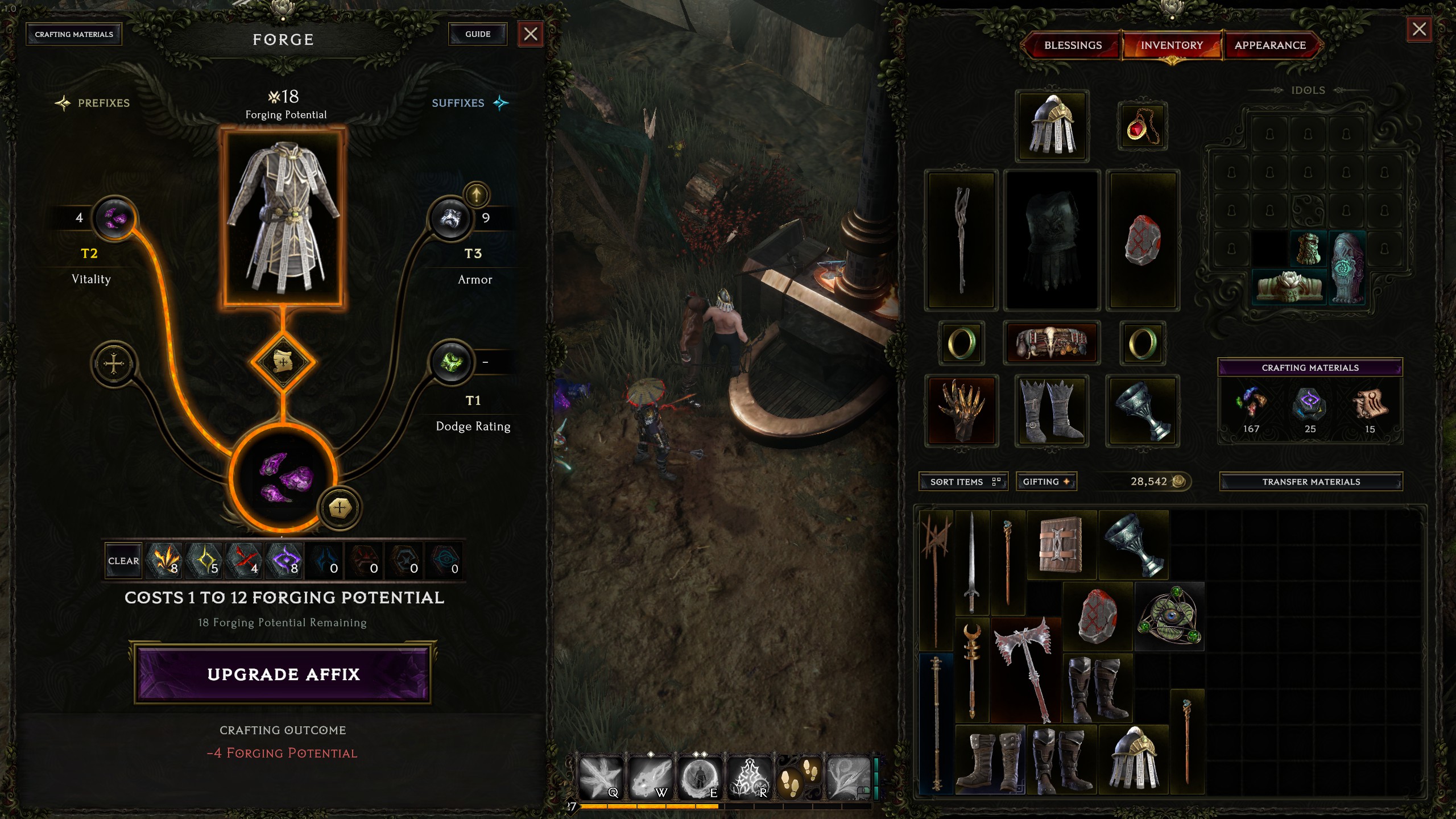
I was convinced this was the ARPG for me long before I even got stuck into crafting or trading, but these systems have absolutely reinforced my burgeoning obsession. As you murder your way towards the endgame, you don’t really have to worry too much about itemisation. Last Epoch will throw a stupid amount of loot at you in every map, and through the shops at every camp you can buy what you need or gamble on a random item up to level 40.
So while gear won’t be a concern just yet, Last Epoch still makes sure to give you that loot high whenever it can.
All you really need to worry about is making sure your weapon is upgraded and that stats on your gear broadly support your playstyle. It’s not really until the final boss of the campaign where you even have to give a shit about resistance caps or stuff like that, and that’s a good thing because until the endgame you’re at the mercy of RNG.
That said, you’ll still find absolutely loads of wonderful bits and bobs in the early and midgame, and thanks to some very handy loot filters you’ll never have to worry about picking up trash. Uniques can randomly drop that augment your character in lots of weird ways, or confer upon you brand new mechanics. Experimental gear, meanwhile, can be looted from the corpses of exiled mages, and even if you don’t end up using them, you can still rip out their experimental affixes for use in the crafting system. So while gear won’t be a concern just yet, Last Epoch still makes sure to give you that loot high whenever it can.
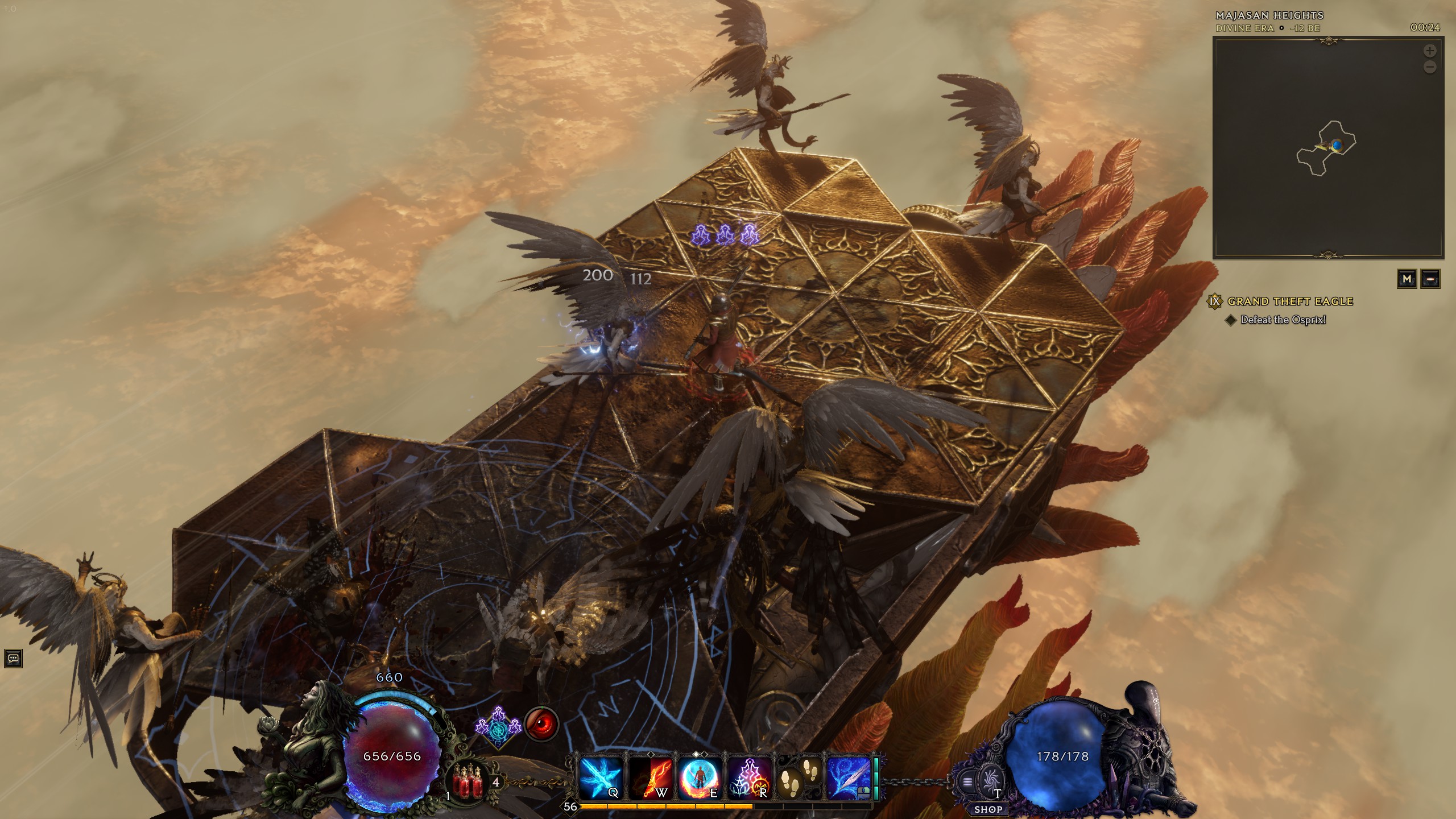
For endgame builds, though, your gear really starts to matter—at least if you’re planning on reaching your build’s full potential. And that’s where the crafting and trading systems come into play. Now, you can start crafting straight away, but you’re better off saving all of your shards and glyphs for endgame. You should definitely keep an eye out for affixes that match the build you’re going for, though, and destroy the items containing them. But I’m getting ahead of myself.
Last Epoch’s crafting is not dissimilar to Path of Exile’s, in that you’re essentially reforging items with new modifiers, but it’s so much easier to parse because you only need to really get to grips with a couple of systems, whereas PoE has the crafting bench, altering items with orbs, fossil crafting, beast hunting and so on.
All items apart from uniques can be upgraded with up to four affixes that augment the piece of gear, adding everything from increased damage over time to extra specialisation points that can be applied to specific skills. This can reduce the forging potential of an item, and when its potential reaches zero it can no longer be reforged, stopping you from infinitely upgrading items (though there are some ways around this by using a specific glyph). If you want to create a very specific item, and you have the shards, there’s little that will get in your way.
There’s another system designed to let you forge legendary items where you combine unique and exalted gear into something new, and what’s particularly cool about this one is that it’s not all about grinding crafting materials, instead sending you into an endgame dungeon where you’ll have to overcome all its challenges before you’re rewarded with the ability to forge a new item. So you have to go on an adventure and do a bit of time travelling to get your fancy new axe. It just feels a bit more meaningful.
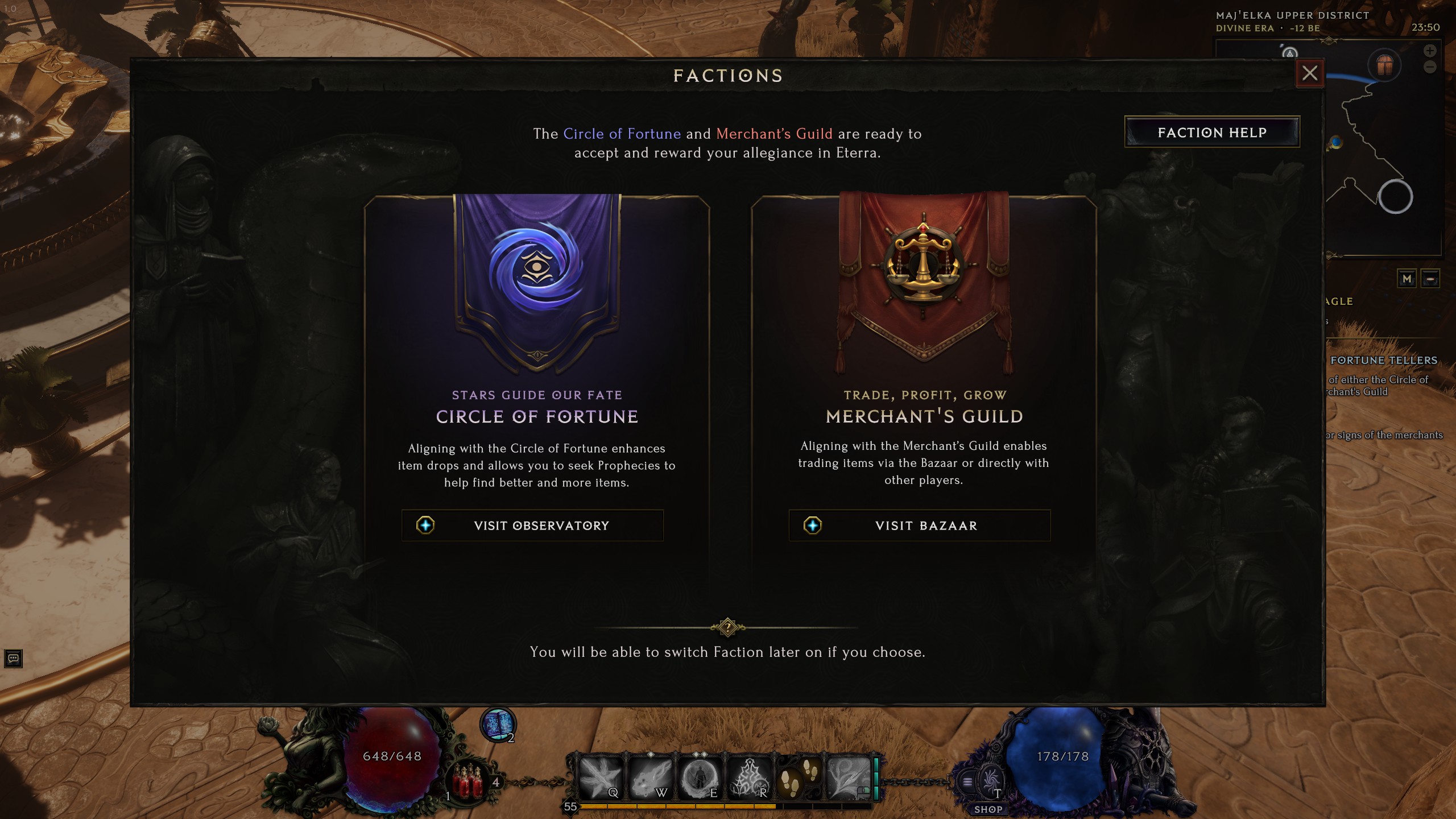
As a Path of Exile vet I’m also a big fan of Last Epoch’s player-driven endgame trading system, and honestly it feels like an improvement. Rather than exclusively making you trade directly with other players or scour a trading site, Last Epoch allows you to (optionally) join the Merchant’s Guild, giving you access to a bunch of NPC traders selling items that players have put up for sale. It’s a middle ground between direct trading and an auction house, but with fleshed out mechanics that give you clear objectives.
There’s a whole separate progression system for this faction where you can gain favour for killing enemies and completing quests, as well as selling items in the bazaar, which can then be spent (along with gold) on shopping sprees. Shopping (and to a lesser extent killing and quest completion) will then net you reputation with the guild, in turn unlocking rewards. At level 1, you can only buy normal, magic and rare items (though you can sell anything). Get up to level 10, though, and you can buy legendary items, too.
What makes this feel so superior to other multiplayer trading systems is the way that it feels so integrated into the game. I always feel kinda weird about just doing direct trades or using an auction house because it feels too much like the real world is encroaching on the fantasy of being a monster-slaying RPG hero, but by tying it into this faction and its accompanying rep system I never feel like I’m being taken out of the game. And just as important is how it gives me in-game goals to work towards, and another excuse to go out and do some quests, which in turn net me more cash, glyphs and shards. It’s a loop that tickles my brain in all the right places.
Back to the future
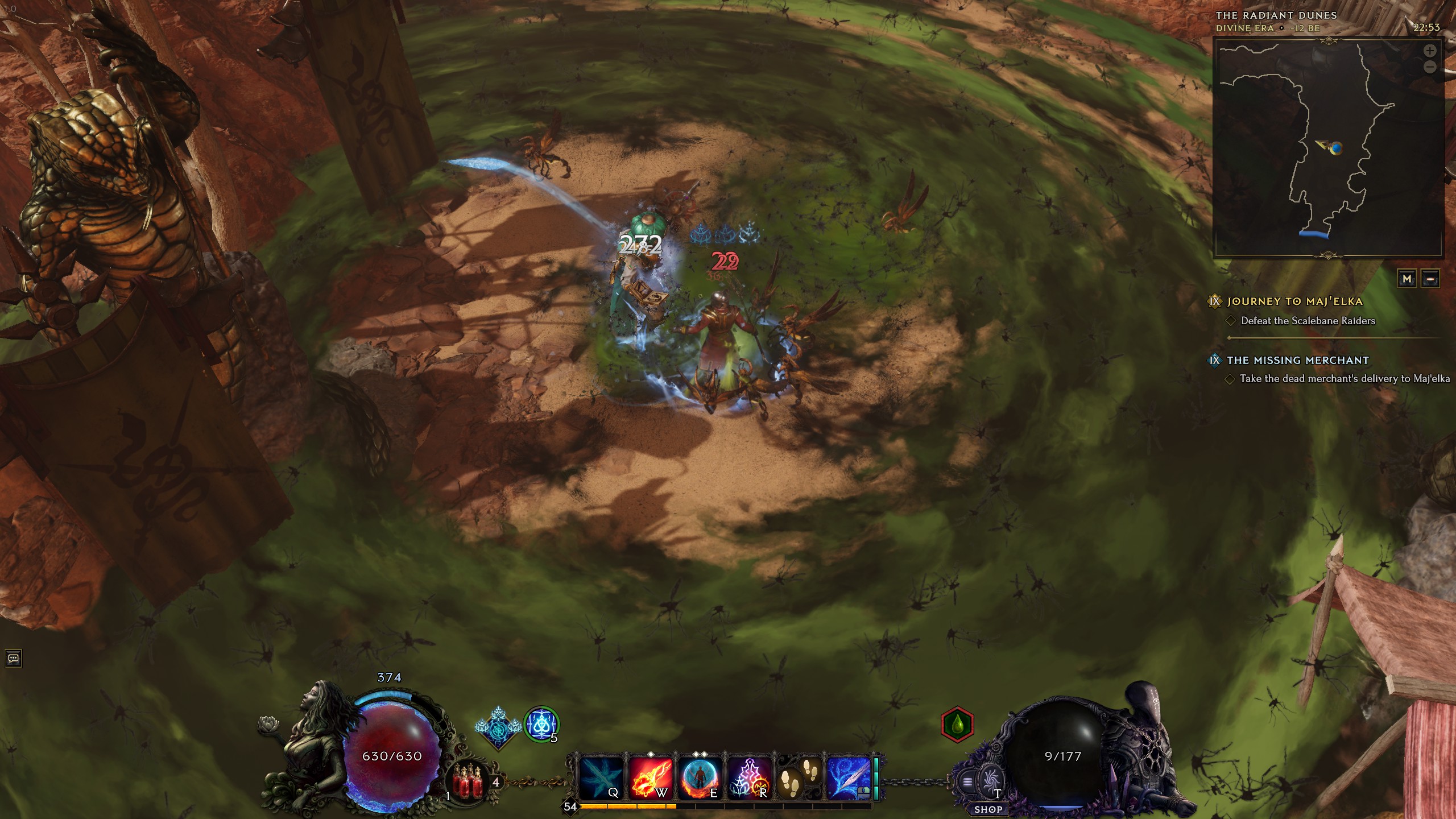
So! I’m very much a Last Epoch boy. For the time being. But Path of Exile’s true power is in its constant evolution. It’s not the same game it was a decade ago, or even a year ago. The question, then, is how much staying power Last Epoch has. And we know from Diablo 4 it’s not a simple matter of just following a seasonal structure. Nothing about its seasons have inspired me to return. How long this love affair will last is very much up in the air, but at the moment I am very happy lolling around in the honeymoon phase, turning my Runemaster into a god of turrets.
At the moment I am very happy lolling around in the honeymoon phase, turning my Runemaster into a god of turrets.
Before I stop writing too many words about Last Epoch, however, I should warn prospective players that it’s not had the smoothest of launches. Like Helldivers 2, it’s proved to be a bit too popular for its own good and the game has buckled under the number of players. I’ve spent an inordinate amount of time dealing with connection issues and not even managing to get to the point where I’m chucked into a queue. Often, when I get in-game I still have to deal with incredibly long loading times between areas—if I wasn’t simply booted before I arrived. Things do seem to be improving, though, and yesterday I must have clocked eight hours into the game (I know, I have a problem) without any issues, aside from a wee bit of lag in the hubs.

